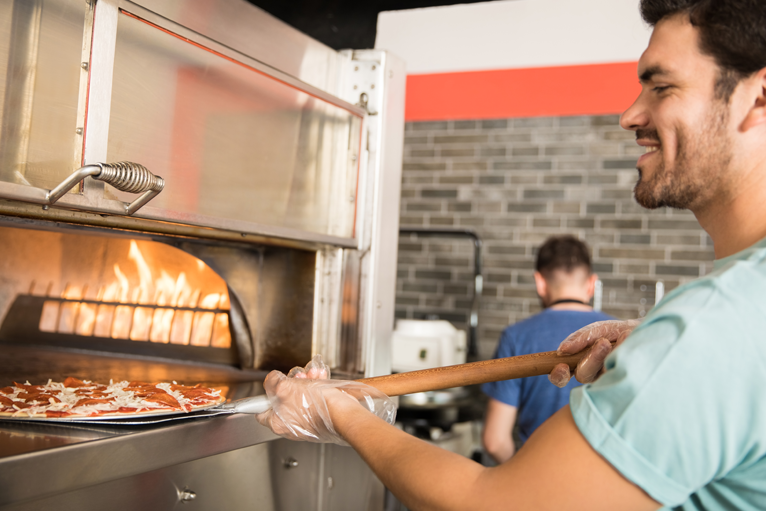In today’s highly competitive labor market, restaurant owners need to find ways to differentiate themselves to attract and retain top talent to their teams. One way that’s often overlooked is the comfort of the working environment. For restaurants, this translates into improving the comfort of the kitchen. Not only does a hot kitchen drive down morale, it also reduces productivity. One study measured a 30% decline in productivity when the kitchen temperature was 10oF above the comfort level.
HVAC consumes around 40% of a typical restaurant’s overall energy, so it would seem logical that improving comfort would require a bigger investment in HVAC and result in increased energy costs. However, there is another approach that can deliver comfort and save money.
It may not be obvious, but the biggest driver of discomfort and restaurant HVAC energy usage is the kitchen exhaust hood. This is because every bit of air that’s exhausted from the kitchen must be replaced from outdoors. If not conditioned first, this hot, humid outdoor air enters the kitchen and makes an already hot space even more uncomfortable. Whether it’s conditioned before it enters the kitchen or after it’s delivered into the kitchen, this air will ultimately be cooled, which requires significant HVAC energy.
So the first step in improving comfort is to optimize the exhaust hood so that you can bring in as little hot, humid outdoor air as possible. At the same time, you’ll require less HVAC energy to cool this air.
Optimizing the hood can sometimes save money on HVAC equipment too. A typical delivery-only pizza restaurant will have two rooftop HVAC units and a makeup air unit. High-efficiency pizza oven exhaust hoods can operate around 1,100 cfm on a 2-deck oven. A canopy hood over the same oven typically operates at 1,500 – 2,000 cfm. A typical rooftop HVAC unit can accommodate 100 cfm of outdoor air per ton of cooling capacity. Therefore, if the restaurant has 12 tons HVAC capacity, then all the outdoor air required to balance the high-efficiency hood can be provided through the HVAC units and the additional makeup air unit isn’t needed. Often the incremental cost of rooftop HVAC units is lower than the cost of a makeup air unit, so it’s worth comparing the cost of additional HVAC capacity versus a separate makeup air unit.
The preceding example can also be applied to any foodservice establishment that requires kitchen exhaust. The higher the required exhaust levels, the greater the potential for energy savings, both CapEx and OpEx.
All restaurant owners understand the value a high-performing employee can add to their restaurant teams and providing a comfortable work environment is an effective way to help retain these valuable team members. Begin the process by specifying a high-efficiency exhaust hood and enjoy the fringe benefit of energy savings.
Should you require help selecting your ventilation solution, the experts who manufacture these types of systems can guide you on the proper selection needed to meet your requirements.
Published by:
David Harpring
Director of Chain Development, Halton Group
Follow David Harpring on LinkedIn
Our recommended next article would be: Finding the Right Exhaust Hood for Your Pizza Oven
Leave us a comment below, and we will answer, or if you have any questions, please send us a message here
Subscribe to kitchenventilation.com
Stay up to date by subscribing to Halton’s Commercial Kitchen Ventilation Blogs by entering your email address to subscribe and Halton will provide you with the latest information on commercial kitchen exhaust hoods, pollution control units, air handling, and safety systems. You will receive notifications of new posts by email.


Comments
One response to “Improve Comfort and Save Money in Your Pizza Kitchen”
Thanks for sharing this information David. It’s unfortunate how many restaurateurs do not understand how selecting an inefficient exhaust hood can cost them, not just in energy, but employee turnover.